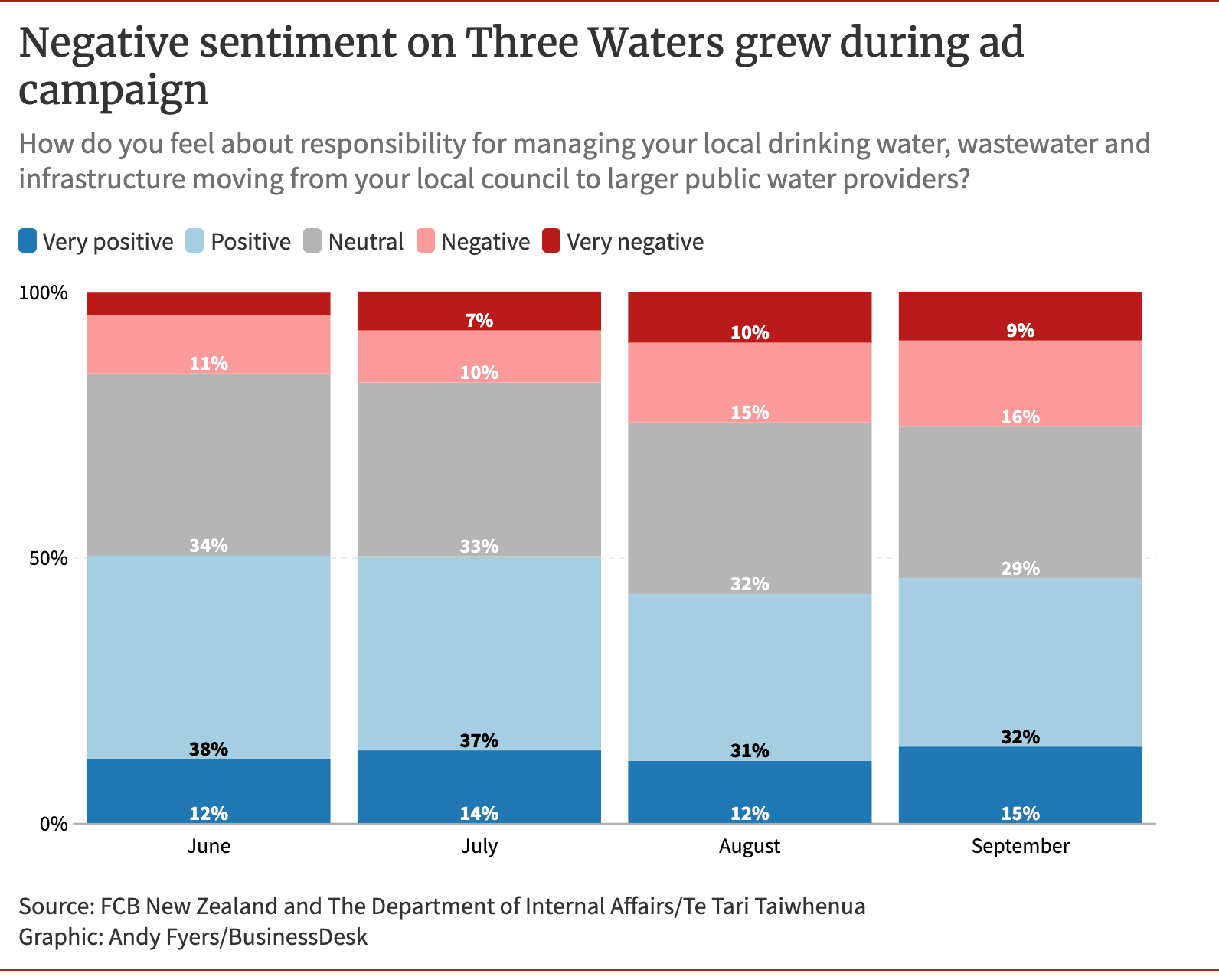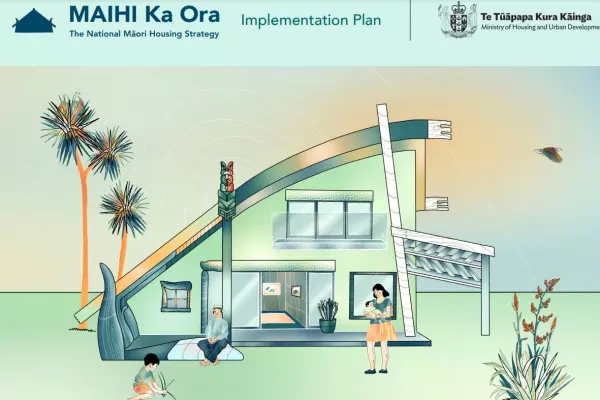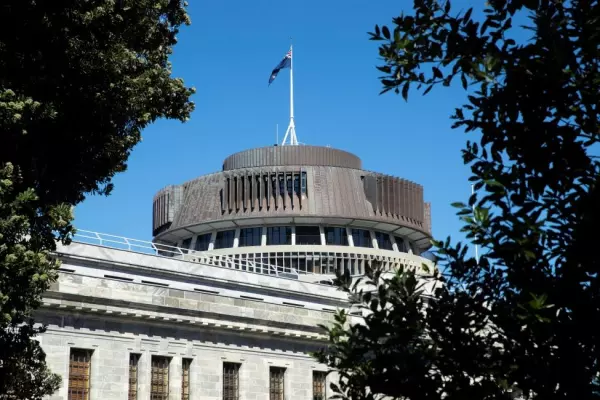The more the government promoted its Three Waters reforms with nationwide advertising, the more public opinion turned against it, according to research from the agency that created the campaign.
By the time four months of television advertising finished in early October, negative social media comments about the proposed reforms increased by more than half. Wider public opinion also moved against the reforms, FCB New Zealand’s data shows.
The $2.76 million campaign across television, radio, print and online media had only a small impact on the public’s self-assessment of whether they understand the proposed reforms.
The data was released to BusinessDesk under the Official Information Act (OIA) by the Department of Internal Affairs (DIA), whose three waters unit is leading the government's plan to consolidate all council-owned drinking, storm and wastewater infrastructure under four regional bodies.
Monthly surveys of several hundred people across the four-month campaign showed public support (“positive" or "very positive”) falling from 50.4% to 48.2% between the campaign’s opening in June and near its end in September. Opposition (“negative” or “very negative") also increased – from 15.1% to 25.3% – in the same period.
The information released doesn’t describe the survey methodology, nor compare the opinions of those who saw the campaign versus those who missed it. During the advertising period, there was a lot of political and media discussion of the proposed reforms, much of it negative and acting against the ads' messages.

The evaluation’s focus on public sentiment for and against the three waters proposal adds weight to questions over whether the campaign complied with the government's advertising guidelines.
The rules require publicly funded campaigns to be factual, unbiased and “free from partisan promotion of government policy”, but the television and print ads contained almost no factual information. During the campaign’s run, the Public Service Commission discussed compliance issues with DIA on at least two occasions, after which one proposed TV ad was canned.
Information-focused advertising would likely comply with the guidelines, but the public felt only slightly better informed at the end of the campaign. There was a 3.4 percentage point increase in respondents who said they understood the reasons for the reforms.

Professor of marketing at Canterbury University Ekant Veer said: “When you're using public funds, it should be to educate and to reach out – not to advocate, especially on a political issue like this." Veer has a specialty in advertising effectiveness.
“This comes down to the ethics of the campaign,” Veer told BusinessDesk.
“The campaign really hasn't shifted the dial at all on the understanding side. If you eliminate the advocacy data because [under the guidelines] that was never meant to happen, and then you see that it’s been ineffective as an educational tool, then they’ve spent about $2.7m to do very, very little,” he said.
No evaluation brief
In its official information act response, the department explained its evaluation approach with an apparent contradiction.
“As is usual when public funds are being spent, it is important to monitor the effectiveness of the associated activities where possible. There was no formal evaluation brief for the campaign,” it said.
Nonetheless, the FCB agency “undertook to monitor the effectiveness of the campaign as it progressed” and provided a report last month, on which this article is based.
The department said that the campaign had "successfully increased public awareness" of New Zealand’s three waters system, given 4.4m full or partial audience views.
But audience reach is only the first step in evaluating advertising, says Veer.
“People should see it. But then, do they like it? Do they care? Are their attitudes changing?”
 Ekant Veer says he "would be pretty annoyed". (Image: Canterbury University)
Ekant Veer says he "would be pretty annoyed". (Image: Canterbury University) The positive trend in September was overwhelmed by negative comments, which rose by about half to more than 35%.
About 70% of social media comments were “neutral” at the end of the TV campaign, compared with about 80% beforehand.
“If I was the social media manager of this campaign, I would be pretty annoyed at the lack of engagement,” Veer said.
As of Nov 1, another $700,000 remained to be spent on the three waters campaign. This will go mainly on print and digital advertising “where more detail can be shared”, the department said.
“There are no plans for further TV advertising at this stage.”
'Get people nodding'
The campaign originated from a concept by Kim Wicksteed, a former CEO of Saatchi New Zealand operating under his company Advice Ltd, that was put to cabinet ministers in December 2020.
The concept document, previously withheld by DIA but now released to BusinessDesk, recommended a campaign that would “get the country supporting the reforms” and be “aimed at the hearts and designed to get people nodding”.
The political viability of the three waters reforms was the main focus of the proposed communications objectives:
- “A greater understanding (and support) for the need for reform."
- “Creating the public environment that is supportive of councils’ opting in."
- “A nationwide resolve to make this happen.“
The department stressed that the December 2020 draft was a “scoping” document, and the campaign was later put out to competitive tender.
The actual campaign closely resembles the December 2020 recommendations, and the proposed objectives are almost word for word what the department asked agencies to pitch for, last April.
FCB did not respond to an invitation to contribute to this story. The department has repeatedly declined to be interviewed and says it is "comfortable" that the advertising campaign complies with the government guidelines.
Update: An earlier version of this article contained an incorrect figure for the change in public understanding of the proposed reforms. The information has been updated.
Do you know something we should know? Email BusinessDesk's public sector investigation team: [email protected].















